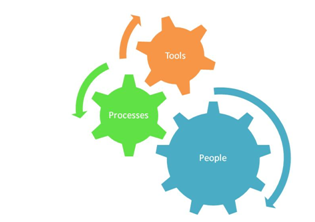This blog has only one objective, namely; to demystify sourcing governance.
I will identify the formulae for the successful implementation and management of an efficacious sourcing governance framework. The intended benefit is that firms and service providers will be able to focus on the truly value-adding elements of the sourcing relationship.
Today, most firms replicate the infrastructure spend model in their sourcing governance. Specifically, most firms spend a disproportionate (significant) amount of their IT budgets 'keeping the lights on', which is yesterday’s news. Firms typically spend between 70% and 80% of their IT budgets on these lights (Gartner, IDC).
Firms also spend the vast majority of their sourcing governance investment on yesterday’s news. They are chronically bottom heavy, in that they have numerous operational level forums - Service Review, Change Advisory Board, etc. The higher order forums, involving strategic direction and executive participation tend to be at best cosmetic, but in the main, are not even scheduled. If you perform an analysis based upon time invested, the result would be closer to 90% of vendor management investment (spend) focused on yesterday’s news (IT Operations).
We continue to see evidence of pain when it comes to sourcing governance:
'With still a lack of robust governance guidelines to manage outsourcing contracts within many organisations, organisations are struggling with the issue of exercising control over the business outcomes they plan to achieve from their outsourcing contracts.' IDC Report, March 2008 – In the mind of the outsourcing customer.
We have substantial literature 'showing the strong positive relationship between outsourcing governance capabilities and outsourcing success and satisfaction'. (Stan Lepeak, EquaTerra, 2009). Stan does state:
'Highlighting the importance of good outsourcing governance is the easy part. Much harder is figuring how to be good at outsourcing governance and getting the skilled resources, budget, software tools and executive support required to do so… this is just as importance to service providers as it is to buyers.'
We now have a level of maturity where we can apply scientific principles to the area of sourcing governance. We can and should implement the formulae and adhere to the ratios which characterise the science of sourcing governance. The benefits will be cheaper, faster, smarter, better and greener IT operations and decisions.
It is easy to implement the science of sourcing governance, but not painless. What is clear is that effective governance is a prerequisite for sourcing success. In fact, numerous studies have shown that the value lost from poor sourcing governance ranges between fifteen and fifty percent of annual contract value (Cutter, Sourcing & Vendor Relationships, Vol 5, No 8, 2004; EquaSiis Market Assessment - Effective Governance Yields Outsourcing Value, 2009) .
The simple view of the science of sourcing governance is that it is the disciple of ensuring all parties involved in the sourcing relationship ‘do the right things, and do them right’. That is, make right decisions in the right way.
There are three elements to effective sourcing governance;
- People
- Processes
- Tools
I will identify the formulas and ratios which must be applied in each element for a healthy and efficacious sourcing governance framework, that complies with ISO/IEC 38500:2008 - Corporate governance of information technology. More importantly, this blog formalises the relationships between these elements. I will answer the question of what is the relationship between the People, the Processes, and the Tools, to ensure the best sourcing outcomes.
Why do we need science around sourcing governance? Because when it comes to sourcing governance we do not know what we are doing in a systematic and comprehensive manner. The term governance is misunderstood[1]. Why has this situation arisen? The simple answer is that the IT community has invested the past two decades or so in ensuring the processes for the effective operation of IT are understood. As a result, several frameworks have been developed, the most recognized being ITIL and COBIT. These frameworks have promulgated the disciplines around IT operations and audits, respectively. Unfortunately, the IT community did not make a comparable investment in the processes central to the efficacious governance of sourcing relationships. In fairness, back in the early 90’s getting IT operations sorted was the priority. Moreover, the vast majority of IT operations were managed in-house so relationships with other parties were a second order matter.
The first of the three elements, People, will appear in the next blog. For now, the People element is all about getting the right "Quanity and Quality" of resources to effectively manage your sourcing relationship.
The first of the three elements, People, will appear in the next blog. For now, the People element is all about getting the right "Quanity and Quality" of resources to effectively manage your sourcing relationship.

